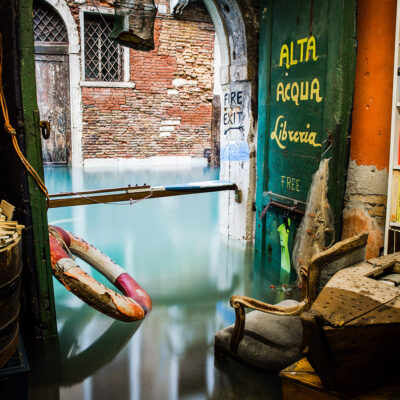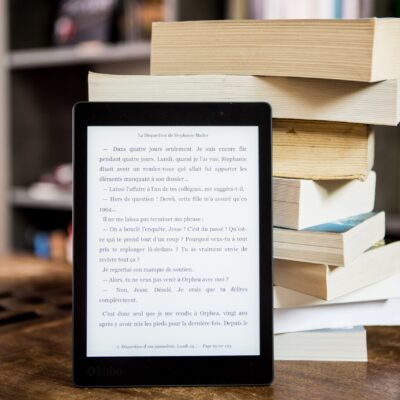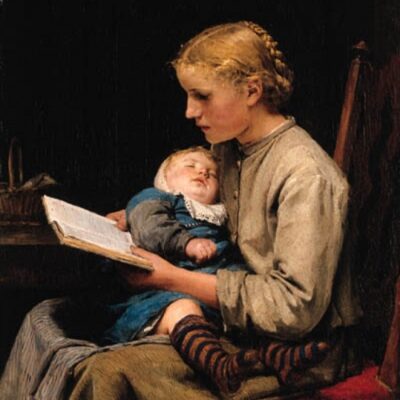South to America: Journey Below the Mason-Dixon to Understand the Soul of a Nation by Imani Perry
It happened not long after I made the South my home. I joined others in my book club for a meal at a local restaurant, a break from discussing assigned novels. We welcomed a new member who had just moved here from California. At some point in the conversation, a recent local crime was mentioned. Our new member, looking entirely comfortable, loudly posed this question to those of us sitting at the table: “Don’t we all agree that there would be no crime here without The Blacks?”
One woman offered her opinion: “I don’t think you can attribute all crime to one race.”
The new member fumed: “Racist?” You’re calling me a racist? I’m not a racist! I loved my gardener growing up!”
She returned to sipping her martini as we stared down at our spinach salads.
And what I remember about this incident, this ray of enlightenment, was the question I silently asked over and over: “Wait, YOU’RE from California, aren’t you supposed to be The Liberal here?”
And in that question, I exposed one of the many misconceptions I retained from my years living in the North. That is: “Anyone who chooses to live in the South, has to be a racist. Anyone choosing to live elsewhere might be, but certainly not to the extent of a Southerner!”
Whether intentionally or not, my teachers in New York led me to believe that I ought not spend any time studying or visiting states south of the Mason-Dixon line. The South was an embarrassment: racist and irrelevant, a stagnant fart lingering far longer than it should, an “other” that in no way represented American ideals.
Imani Perry, professor of African American studies at Princeton, challenges this type of thinking in her new book South to America: Journey Below the Mason-Dixon to Understand the Soul of a Nation. A melding of memoir, travel narrative, and history, her essays take readers on an insightful journey through the South, from the Mason-Dixon Line to Florida, West Virginia, and the Bahamas. The author argues that understanding this country starts with the South. “To cast away the South,” she writes, “only props up a heroic self-mythology of the U.S. that fogs up the mirror of history.”…. “Paying attention to the South,” she asserts, “allows us to understand much more about our nation, and about how our people, land, and commerce work in relation to one another, often cruelly, and about how our tastes and ways flow from our habits.”…. “The consequence of truncating the South and relegating it to the backwards corner is a misapprehension of its power in American history. Paying attention to the South — its past, its dance, its present, its threatening future, and most of all how it moves the rest of the country about — allows us to understand much more about our nation.”
In South as the Soul of America, Imani Perry discusses her inspiration and intention for writing South to America:
I was born in Birmingham, Alabama, and I grew up in Massachusetts. So, I have spent my life departing and returning to the South and having this feeling that there’s this extraordinary mischaracterization of the region as somehow out-of-step and behind the rest of the country — this sort of other, strange place. That perception is a way to make the South the scapegoat for the nation’s sins or vulnerabilities, when in fact, a much better account is that the South is really where the country began, and the place where we are forced, I think, to confront in the most dramatic ways the tensions between the promises and the ideals of the nation and the reality of a history of cruelty and exploitation.
So, for the book, I wanted to correct that mischaracterization, but also delve into the South with a view toward the possibility of making our country think about how we can live up to our professed ideals of equality for all, and how we can attend to those who are most vulnerable in the fabric of the nation. The South is a place where there’s a lot of concentrated vulnerability, but also a place of some of the most extraordinary culture and imaginings [and dreams of freedom]. The book is a combination of an argument about our national identity and also a love letter to the region.
According to Southern Review of Books, in South to America: A Journey Below the Mason-Dixon to Understand the Soul of a Nation, Imani Perry “…. tells stories of the American South that readers from outside the region might not know, and gives fresh perspectives to Southerners on the area’s culture, landscape, divisions, and commonalities. “Often, Southerners accept the idea that other regions are more sophisticated, and have done more, and it’s simply not true, and it’s certainly not true in terms of building the country,” Imani Perry states in an interview found at this site. She argues that the South serves as a bellwether for the rest of the United States.”
Inspired by Albert Murray’s 1971 memoir-cum-travelogue South to a Very Old Place, Imani Perry travels to over a dozen Southern cities and towns, reporting on both histories and modern realities. After A Note from the Author and an Introduction, the book is divided into sections. Origin Stories includes Appalachia, Virginia, Louisville, Annapolis and the Caves, and Washington, DC; The Solidified South includes Upper Alabama, North Carolina, Atlanta, Birmingham, Princeton to Nashville, Memphis, and the Black Belt; Water People includes The Low Country, Florida, Mobile, New Orleans, the Bahamas and Havana.
One of the features I love about South to America is the way in which Imani Perry scrutinizes concepts, forcing me to question my assumptions and regard them differently. In a chapter titled “Mary’s Land: Annapolis and the Caves,” she traces an ancestor mentioned in the 1870 and 1880 censuses in Maryland. However, there are missing pieces to her story caused by officials’ indifference to recording the details of her life. Was she named Esther or Easter? Was she born in Maryland in 1769 or Georgia in 1789? Where was ‘home ‘for her? The author reflects:
We, descendants of the incomplete puzzle, know a good deal about dwelling in rough, negotiated spaces. Trapping places where intimacy existed despite the fact that law did not recognize its sanctity. Places where life and death and woundedness and love all persisted. But do our ancestors truly feel at home? (Do we?) Was home some affect in the ether, hard to hold, or a future perfect tension, imagined as part of some freedom to come? This word that I hold in my mouth, ever and always meaning the state where I was born, “home” is not something I am sure can be assumed to have had meaning before freedom. Familiarity, reliability, even “love”— these are not the same as “home”. Nor is home the building where one sleeps, necessarily. Prisoners, interned people, the involuntarily committed and institutionalized are not at home, are they? I think of the gospel song “Ain’t That Good News,” which goes, “I got a robe in that kingdom, ain’t that good news. I’m gonna lay down this world, gonna shoulder up my cross, gonna take it home to my Jesus, ain’t that good news.” Maybe faith was the antidote to homelessness. [pp. 71-72]
I also love the skill with which Imani Perry points out the ironies that make up the history of our country and relates long-buried events. Here is just one of many examples.
Immediately after World War II, and after my grandparents had already left, German scientists arrived in Huntsville as part of Operation Paperclip. First the scientists built ballistic missiles and other weapons. Later they worked on establishing NASA.
The leader among them was a rocket scientist named Wernher von Braun. A Nazi, he was a master of rocket technology in Germany and was brought to Alabama to do the same. Although von Braun claimed that his Nazi party membership was solely utilitarian, concentration camp victims remembered that he selected prison laborers for his laboratories. And he worked mere steps away from torture facilities and walked among the corpses. It is bad enough that Nazi Germany adopted racist ideologies from the United States, but it seems worse still that after they committed genocide, their scientists were invited to Jim Crow Alabama, to plot their way to the sky. [p. 102]
For me, the descriptions of the South at its best, just sang. Southern artists have created so much beauty and depth of humanity which Imani Perry showcases brilliantly.
Between drifting and captivity, there is an undeniable melancholy. The blues is testimony to the possibility of a laugh, a sweetness in each place. A libation poured for the dead. And joy. Of course the lost-cause narratives of “happy slaves” on plantations were false. But it is true that the culture made by enslaved people insisted upon joy. It was not a naïve childish satisfaction. No, it was, it is, the joy of a voice that could soar one moment and growl the next, giggle and holler. It’s the joy of dancing in a whip-scarred, food-deprived, achy body. The joy of love, of the binding between souls across the borders of flesh and the rules of society. It was a refusal to be rendered entirely in the image of White Americans, even when completely beaten down. [pp. 224-225]
As the author states:
Abundance wasn’t found in prosperity but instead in the lushness of the magnolia tree and the glory of birds flying overhead. Most of all it was found in the stuff of their imaginations. [p. 228]
In a PBS interview, Imani Perry states that: “The South is really not only where the idea begins, right, of what this nation would become, but it also has moved the country about because it was the bounty of the South that allowed for the nation to become wealthy, to become a global power. And it has continued to shape our tastes, our habits, our culture in ways that we often deny, in part because it’s done the dirty work of the nation in many ways.”
American exceptionalism, that sense that we are somehow special and ordained as such, is a myth sedimented on Southern prosperity: oil, coal, and cotton. Every piece of evidence of our national distinction has relied upon this wealth of the nation. As you certainly have already gleaned, I do not think genocide, slavery, and exploitation were worth it. Nor do I believe they should be tidily set aside in moments of patriotic fervor or national piety like the Fourth of July or the following days: President’s, King’s, Labor, or Memorial. But even if you are a lover of the national romance, integrity requires that the stories be at least halfway honest. It is not enough to set aside a little time or attention here of there to grieve our national sins, then, soft as butter, turn back to the proclamations of greatness. Because history is an instruction. And what you neglect to attend to in the past, you will surely ignore in the present. If you doubt what I’m saying, look into the production of your computer and desk, your kid’s toys. Look into the kitchen staff at your favorite restaurant, the revenue streams your state gets from prison, and the workers at the side of the highway as you speed by. [pp. 228-229]
How do we move toward a more just, more kind, more humane society? Imani Perry says not by sugar-coating the history of one section of America and vilifying that of another. Yes, some of the most horrific events have taken place in the South but also some of the deepest, most profound freedom dreams.
If there is one egregious miscasting of the Black Power movement, it is the neglect of the South in that history. The action was not all on the coasts or major cities. Once upon a time, emancipation and its consequent constitutional amendments promised life, liberty, and the pursuit of happiness, only to be dashed when Reconstruction ended. Black people turned to building internally—schools, churches, civic organizations—so that they were ready when it was time to take up direct action again. Once upon a time, Black Southern organizers, leaders, and laypeople faced death and confronted evil. They changed American law. In fact, I would argue that 1954 to 1965 was the most significant decade in the history of US constitutional law and legislation. Black people’s protests offered the prospect of an equitably heterogeneous society. Nominally embraced, it was socially and economically refused. Enter Black power. Or perhaps reenter. Black nationalism and black secession and Black armed self-defense had always been a part of the political imagination of the Black South, from Martin Delany through Nat Turner and Denmark Vesey and the Stono Rebellion and Garveyism and the Deacons for Defense. For some reason, folks want to act as though Black power started in New York and Oakland, even though the Black Panther logo came from the Lowndes County Freedom Organization in Alabama, and even though Huey Newton was born in Louisiana, and Sundiata Acoli in Texas, and Eldrige Cleaver in Arkansas, and Kathleen Cleaver in Tuskegee, Alabama, and Gil Scott-Heron was raised in Tennessee, and Assata Shakur in Wilmington, North Carolina, and Geronimo Ji Jaga Pratt in Louisiana. Sterling Brown commented in the earlier civil rights era: “It is a mistake to believe that this protest in the South is instigated by Negroes from the North… I found a large degree of militancy in Negroes who were Southern born and bred, some of whom have never been out of the South…I found this protest natural since the Southern Negro is where the grip is tightest and the bite goes deepest and most often.” Stated another way, Southern Black people learned steeliness the hard way, under the thumb of Jim Crow. And perhaps from seeing how the North wasn’t much better, if at all. They learned there was nowhere to turn and no option but to fight back. [pp. 240-241]
I highly recommend this intimate, detailed tour of and tribute to the South. It is an essential and unique contribution to history and a hymn to this region so many of us have come to cherish.
















